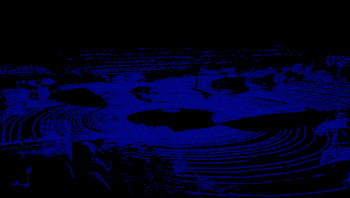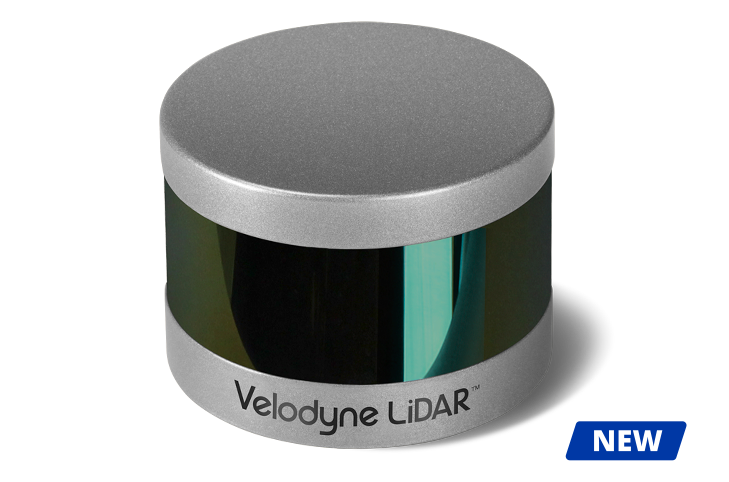Today, Velodyne LiDAR announced a new addition to its Puck line of LiDAR sensors. The Puck Hi-Res is designed to provide higher resolution at greater distances. It is optimized for autonomous driving applications, but can also be used in UAV, 3D mapping, robotics, and security applications.
Specs
The Puck Hi-Res is nearly identical to the original VLP-16. It still provides real-time 3D LiDAR scanning with a horizontal field of view of 360° at a range of 100 meters. The primary difference is the vertical field of view, which has been compressed from 30° to 20°.
As a result, the new Puck Hi-Res boasts tighter distribution of its 16 channels—a space of 1.33° instead of 2.00°. That means it takes the same 16 measurements in parallel, but they’re packed closer together for higher resolution data.

Velodyne LiDAR data
The Puck Hi-Res enables its host system to detect and better discern objects at greater distances.
The sensor is best suited for autonomous vehicle applications, but it will provide denser data and better object recognition in all its applications.
As Wayne Seto, Velodyne LiDAR product line manager told SPAR 3D, the Puck Hi-Res enables UAVs and other 3D-mapping platforms to capture more points per square meter than the other Puck sensors, assuming all else remains equal. However, UAV users will likely still prefer the Puck LITE, which is weight-optimized for UAV use.
How the Puck Hi-Res Gets Denser Data
Seto explained that the Puck Hi-Res tighter channel distribution allows it to capture data where previously it left a “space” in its measurements. This makes for denser data overall.
How much denser? When capturing an object at 100 meters, the original LiDAR Puck takes measurements that fall on the object 3.49 meters apart. The new Puck Hi-Res takes measurements that fall 2.32 meters apart. That’s significantly more measurements per square meter. If you take that object at 100 meters and move it closer and closer to the sensor, the scan data will continue to get proportionately denser.
As Seto explains, the final effect is that the Puck Hi-Res can generate a higher resolution image showing more details of the object.
Ramping Up Production
Velodyne LiDAR was careful to note that the Puck Hi-Res was well into its development cycle when Ford and Baidu invested $150 million into the company. However, they intend to use the money they’ve received to ramp up production of the sensor to provide a large number of units at a low cost.
For OEM customers (like automobile manufacturers), Seto assures SPAR 3D that the Puck Hi-Res will come at an “an attractive price point based on their annual volumes.”
For individual customers, Velodyne LiDAR is accepting orders of the Puck Hi-Res now, with a lead time of 8 weeks.






